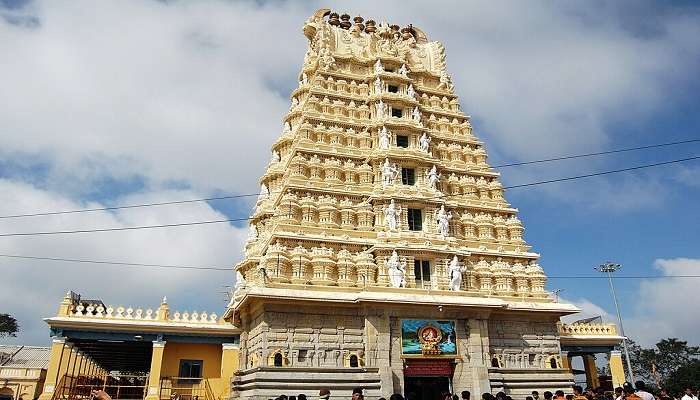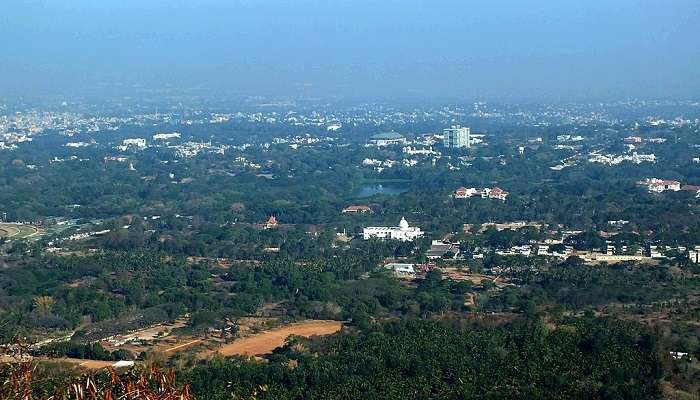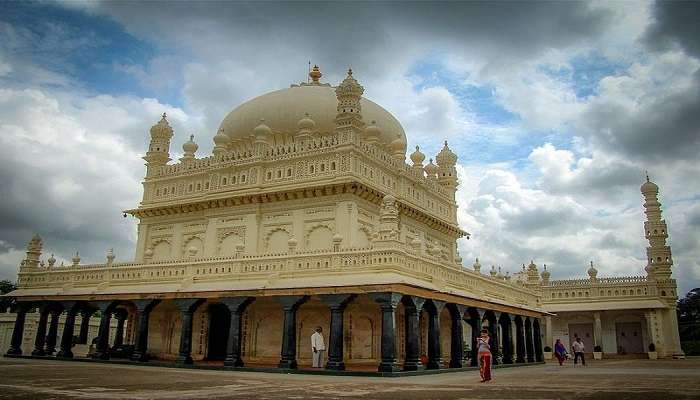Discover The Wonders Of Mysore Zoo A Guide To Explore Wildlife And Nature In 2025
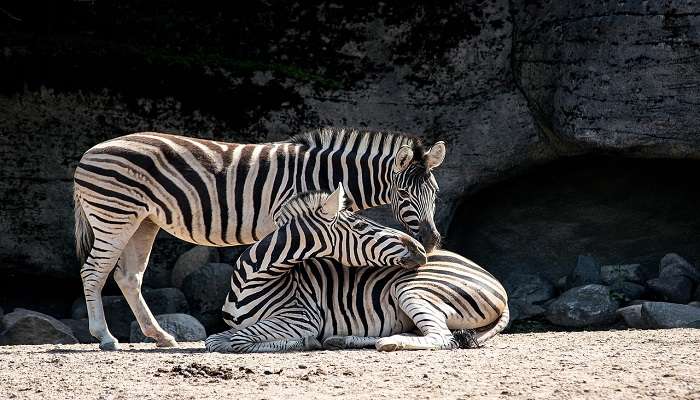
As we become increasingly accustomed to the threats to animals, we begin to realise the importance of saving them. Zoos and their maintenance are one way of doing it. But these zoos are much more than mere protection centres. These are ideal ways for tourists to experience the integration of wildlife with care, science, and education. One such notable zoo is the Mysore Zoo. Playing its part in preserving wildlife, the Mysore Zoo is a popular tourist destination in the city. Animal conservation and protection are at the centre of the zoo’s administration. However, it offers plenty of other elements to see that pack a punch.
Mysore Zoo – Top Things To Do
Mysore Zoo is a brilliant unification of tourism and wildlife conservation. Let’s explore all the things you can do while here in our travel guide for this destination:
1. Read About The Zoo At The Entrance

A good way to start your journey at the Mysore Zoo is to read about its details at the entrance kiosk. You can see the board and detailed information written. You can even ask the ticket vendors or the zookeepers about the zoo. Also known as Sri Chamarajendra Zoological Gardens, this is one of the greatest zoological gardens in India. This Zoo was founded in 1892 by Maharaja Chamaraja Wodeyar for the benefit of the Royal Family. In addition, it was given to the State Government’s Department of Parks and Gardens at independence.
The Zoo is a unique zoological garden because of its careful planning. For the animals living here, it offers a natural environment. One hundred and sixty-eight species, ranging from large to small cats, aquatic to terrestrial birds and primates to reptiles, call this zoo their home. A well-cared elephant here achieved international renown and acclaim when it underwent the first caesarian section delivery in history. The Zoo is spread across 157 acres of land. It frequently hosts a variety of exhibitions, but the one featuring insects always steals the show. The zoo also organises some educational programs, like summer camps, literary competitions and youth club events.
Duration: half an hour
Importance: information
Also Read: Pandav Falls
2. Exploring The Wild Animals
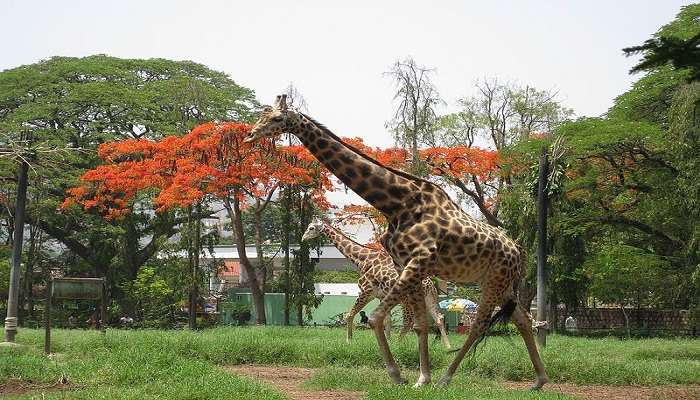
When you enter through the main gate, you will experience the chirps of birds lined up on both sides of the path. You will instantly know that you are in for a treat ahead. A variety of birds, including cranes, swans, peacocks, white peacocks, parrots and parakeets, line both sides of this walkway. While strolling down this trail, you will see the zoo keepers feeding some of the birds. But what comes next is more interesting.
The wild animal’s cages start with leopards. There are around 7-8 healthy leopards at the Mysore Zoo. They are housed in a sizable enclosure. As a result, the animals feel comfortable. The Tiger’s enclosure is at the opposite end. A tiger and a tigress can be seen in the exhibit. One could appreciate the built structure of the enclosures as they let the guests get quite close to these wild animals. Other wild animals include zebras, lions, Indian grey wolves, jackals, jungle cats, leopard cats, slender-tailed meerkats, otters and white tigers.
Duration: 2-3 hours
Importance: wildlife exploration
3. Spend Time Watching The Stars Of The Zoo

Mysore Zoo is the only zoo in India that has gorillas. The zoo serves as a home for orangutans and chimpanzees. The Mysore Zoo is home to a variety of other exotic creatures, including otters, giraffes, zebras, white deer, African elephants, bears, porcupines, rhinoceroses and tapirs. Here, one can observe a variety of birds, including the largest bird in India, the Sarus Crane, Love Birds, several kinds of Parrots, Vultures, Eagles and the flightless Emu and Ostrich, SpoonBill, Pelican and White and Blue Peacocks.
The reptiles, including cobras, king cobras, pythons, crocodiles, alligators and even star-studded turtles, are protected and conserved here. However, there is more to the list. The rarest animals are in the middle of the Zoo. These animals include Indian rhinoceroses, red kangaroos, zebras, Rhea, red ibis, baboons, lemurs, sun bears, female chimpanzees, binturongs, Indian rhinoceroses, Hanuman langurs and white peafowl can also be found. Besides this, 35 types of exotic ornamental plants and 85 species of foreign and Indian trees are also found here at the Mysore Zoo.
Duration: 3-4 hours
Importance: wildlife exploration
Related Post: Keoti Falls
4. Stop For Meals And Refreshments

Roaming around the Mysore Zoo can be a bit tiring due to its large size. While there are benches and greenery everywhere, nothing beats a good refreshment. There are stalls set up near the entrance of the zoo, providing good quality food and drinks. Considering the somewhat high temperatures, ice creams are a popular choice. Here, you will experience the cleanliness and sustainability efforts of the Mysore Zoo. You get your money back when you return the empty bottles at the zoo entrance, contributing to the zoo’s plastic-free status. Also, your wrappers are taken care of by the shopkeepers so that guests don’t litter the park.
These tiny efforts to maintain the region clean and environmentally friendly are incredibly appealing. A key point to note is that every few hundred metres in the zoo, there are facilities for drinking water and bathrooms. These kinds of refreshment options serve well as many zoo visitors are children. For food, there are thalis, north and south Indian cuisines, noodles, desserts and ready-to-eat snacks available. The taste is good and the pricing is fair. It is advised that you eat here before leaving the zoo. This will not only save you time looking for a restaurant outdoors, but it will also allow you to rest your weary feet. You have two options after leaving the Mysore Zoo: either go on to the next place of interest, or just return home.
Duration: 1 hour
Importance: food, rejuvenation
5. Visit The Karanji Lake And Karanji Park
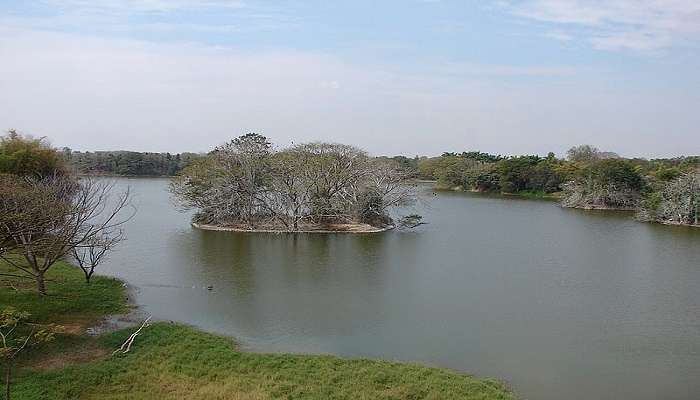
While visiting Mysore Zoo, a good idea is to take a detour to the nearby Karanji Lake. The eastern part of the zoo is home to this majestic lake spread across 77.02 acres. The Chamundi Hills serve both a striking backdrop and a catchment area around the lake near Mysore Zoo. In the past, the lake served as a sort of open-air trash dump for everyone to utilise for whatever purpose. The only birds in the region were crows and scavengers and it was all slum land. As such, there was always a chance that real estate developers might seize it for their own projects. Luckily, the public works department gave the tank to the Mysore Zoo in March 1976 so that it could be developed and maintained.
Following the waterfront area’s protection and afforestation, a variety of birds began to congregate in the lake for breeding and nesting purposes. There is a Bird Watch Tower at the lake where dedicated bird watchers can get a fish-eye perspective of the city. Using a telescope and binoculars, guests may get an all-around view of the rare birds that come here for breeding and during migration. At the entrance to the Lake Park, there are over a hundred therapeutic plants set up in the dedicated Karanji Park. In order to spread the growth of new plants close to the lake, a nursery has also been established within the park. It is absolutely forbidden for cars to enter Karanji Park.
Duration: 1-2 hours
Importance: travel, adventure, bird watching
You May Also Like To Read: Govindgarh Palace
Mysore Zoo is a chance to establish a connection with rare wild species that need care and are equally deserving of living on this planet. When you visit the Mysore Zoo, you are touring a spot and contributing to these precious living beings’ health and good care. So, plan your trip to Mysore and visit the Mysore Zoo. Because when wildlife thrives, everyone thrives.
For our editorial codes of conduct and copyright disclaimer, please click here.
Cover Image Credit: minka2507 for pixabay
Frequently Asked Questions About Mysore Zoo
What is so special about Mysore Zoo?
A few decades ago, Mysore Zoo was not in good condition. However, the government has introduced several wildlife and environment-friendly policies that have turned the zoo into a precious place called home by various animals. The landscape, cleanliness, good care provided for animals, and a pretty good location make the Mysore Zoo special.
What is the most famous animal in Mysore Zoo?
While many rare and unique species are held captive at the zoo, the Gorillas are the most famous. They are a constant point of attraction for tourists, both adults and children. Recently, two gorillas were brought from Germany, and they are famous for their intuitiveness and playful behaviour.
What is Mysore Zoo's Location?
The exact Mysore Zoo Location is Zoo Rd, Indira Nagar, Ittige Gudu, Mysuru, Karnataka 570010
How to book tickets to Mysore Zoo?
You can purchase tickets while visiting the zoo or book them online. If you are visiting during weekends, it is suggested that you book in advance from the official website of Mysore Zoo.
How far is Mysore Zoo from Mysore Palace?
The Mysore Zoo is close to Mysore Palace. It’s around 700 m away from the Mysore Palace. You can take a private taxi or go by personal transport.
People Also Read:
Indira Gandhi Zoological Park Nehru Zoological Park Kevadia Zoological Park

Unveil the hidden treasures of the globe and turn every travel dream into reality. As a Content Writer, I am passionate enough to craft stories from ancient wonders to modern marvels. My words paint the picture-perfect itinerary for unforgettable experiences. Let my words be your trusted guide to immerse in the diverse culture and discover the beauty of the unknown.



